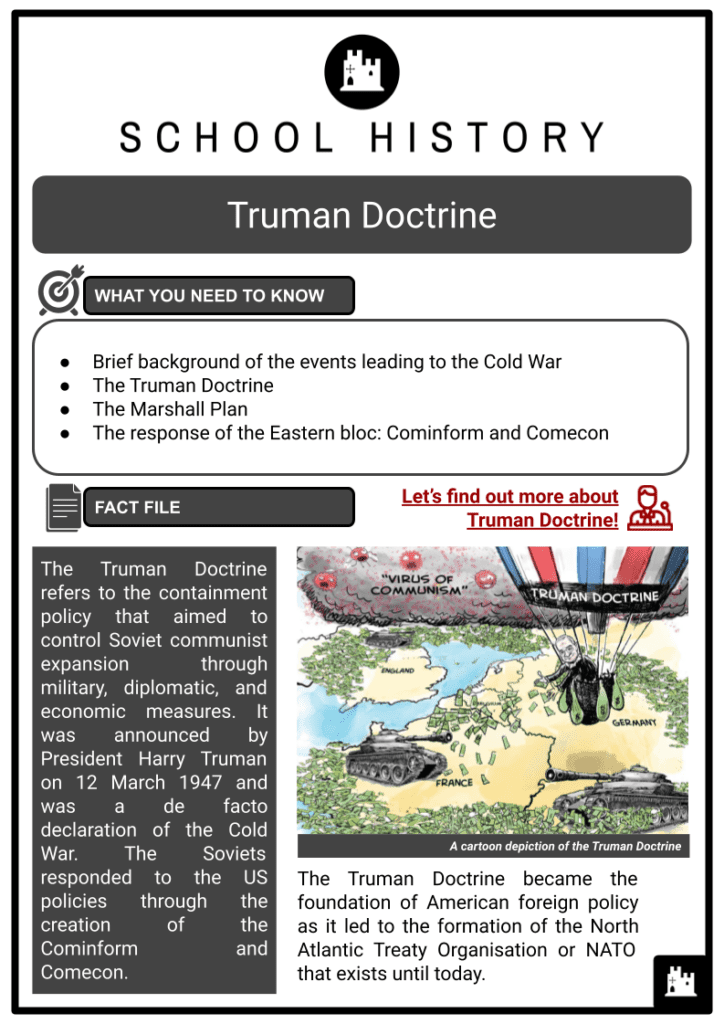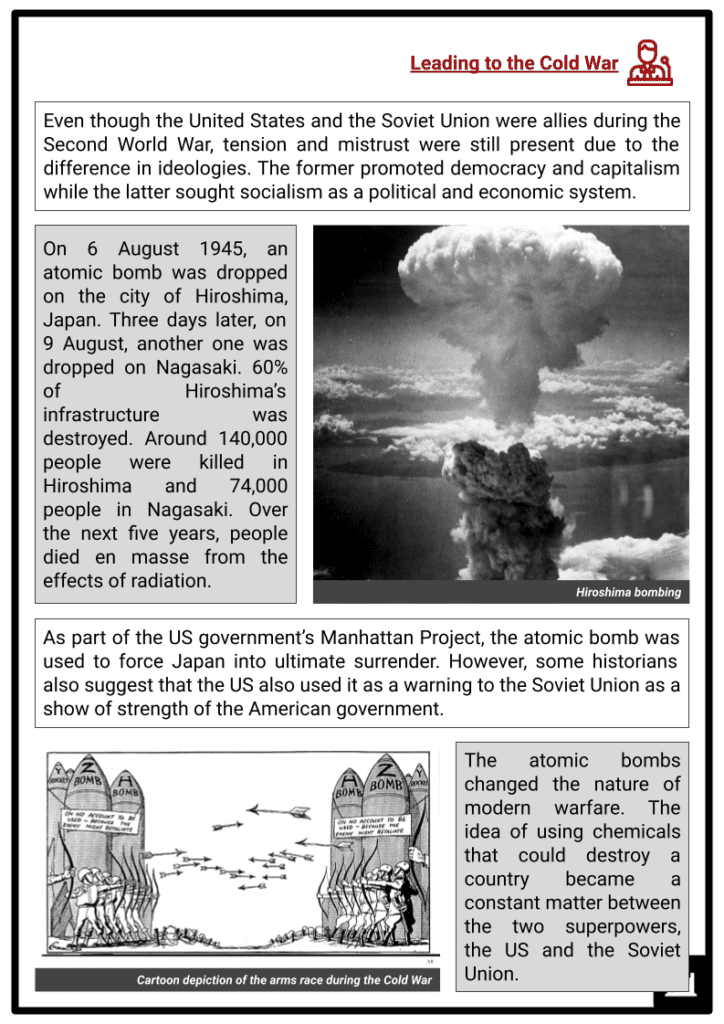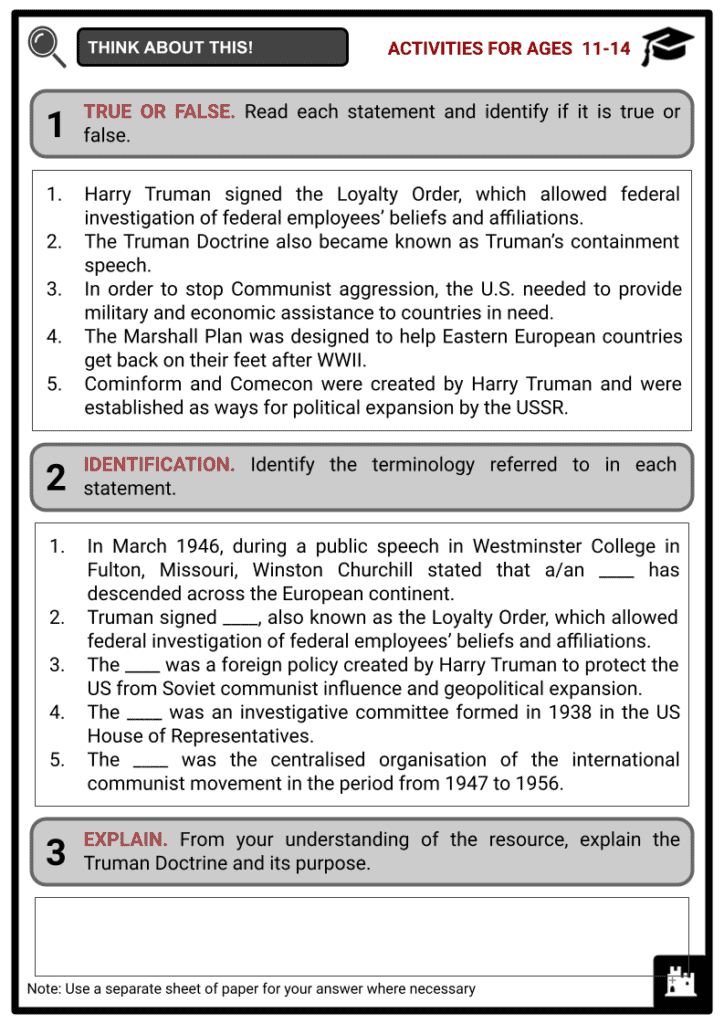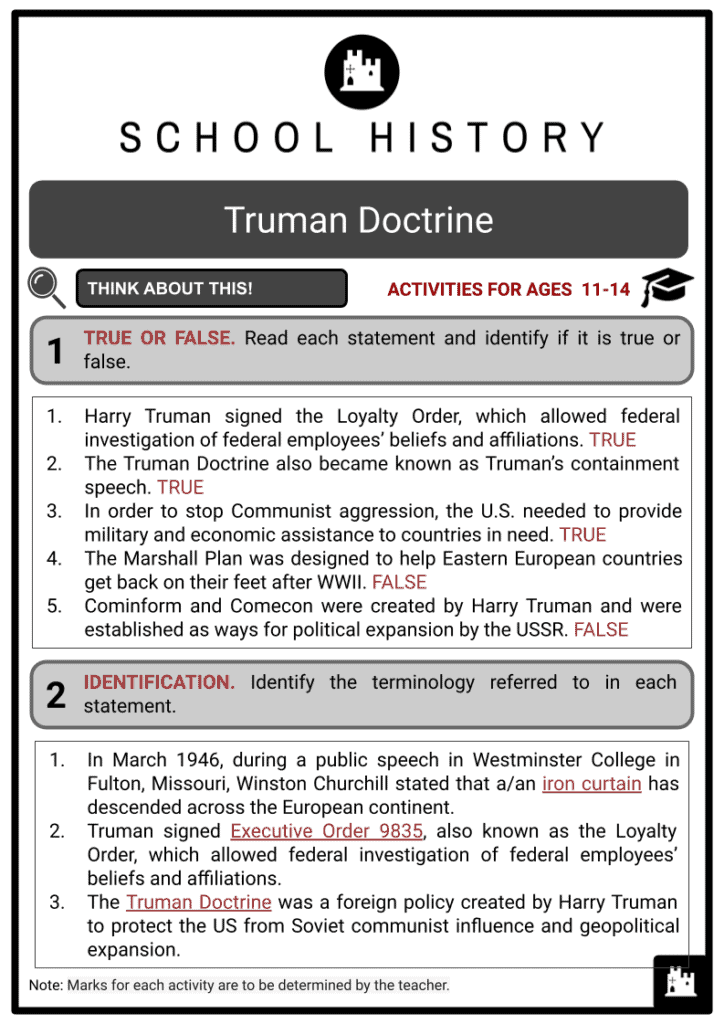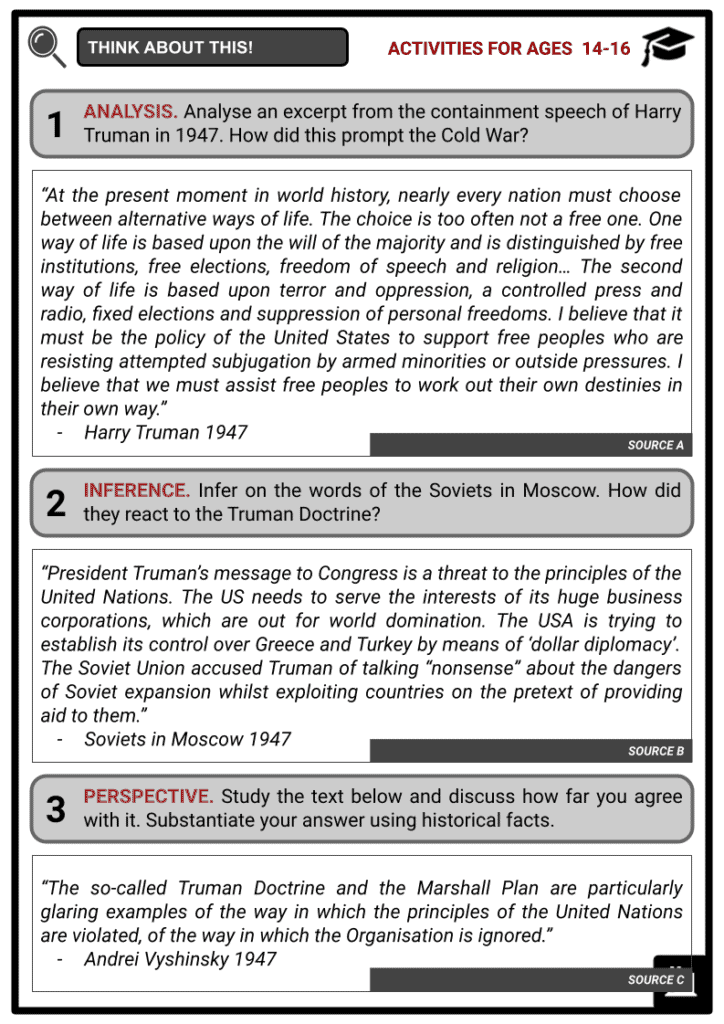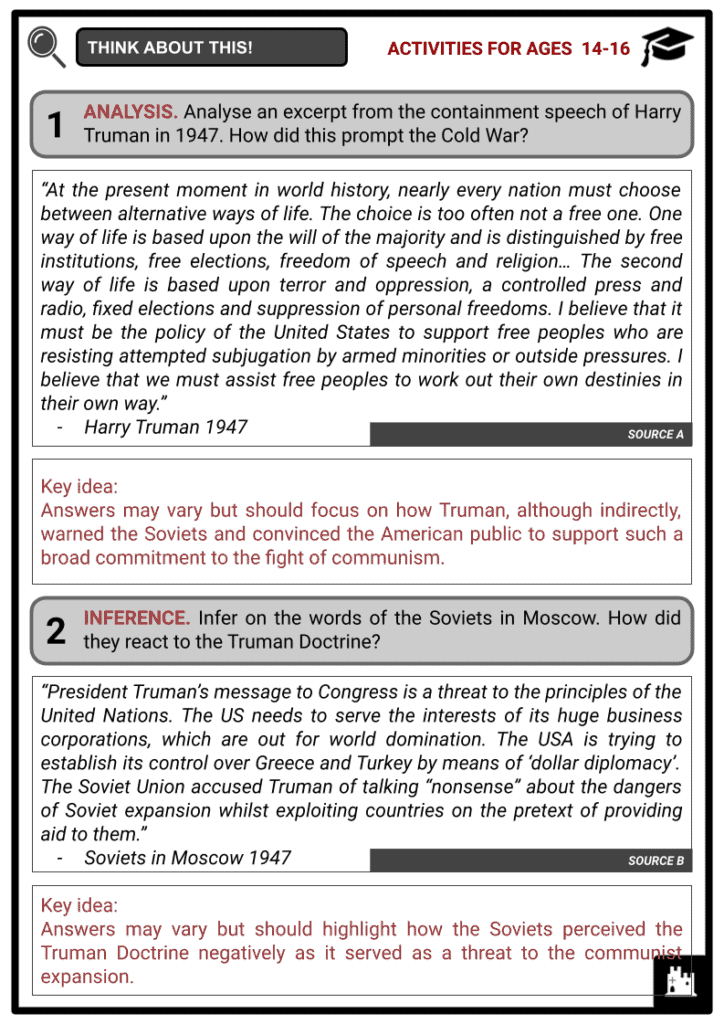Download Truman Doctrine Worksheets
Do you want to save dozens of hours in time? Get your evenings and weekends back? Be able to teach about the Truman Doctrine to your students?
Our worksheet bundle includes a fact file and printable worksheets and student activities. Perfect for both the classroom and homeschooling!
Summary
- Brief background of the events leading to the Cold War
- The Truman Doctrine
- The Marshall Plan
- The response of the Eastern bloc: Cominform and Comecon
Key Facts And Information
Let’s know more about Truman Doctrine!
The Truman Doctrine refers to the containment policy that aimed to control Soviet communist expansion through military, diplomatic, and economic measures. It was announced by President Harry Truman on 12 March 1947 and was a de facto declaration of the Cold War. The Soviets responded to the US policies through the creation of the Cominform and Comecon.
The Truman Doctrine became the foundation of American foreign policy as it led to the formation of the North Atlantic Treaty Organisation or NATO that exists until today.
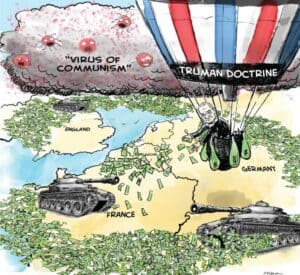
- Even though the United States and the Soviet Union were allies during the Second World War, tension and mistrust were still present due to the difference in ideologies. The former promoted democracy and capitalism while the latter sought socialism as a political and economic system.
- On 6 August 1945, an atomic bomb was dropped on the city of Hiroshima, Japan. Three days later, on 9 August, another one was dropped on Nagasaki. 60% of Hiroshima’s infrastructure was destroyed. Around 140,000 people were killed in Hiroshima and 74,000 people in Nagasaki. Over the next five years, people died en masse from the effects of radiation.
- As part of the US government’s Manhattan Project, the atomic bomb was used to force Japan into ultimate surrender. However, some historians also suggest that the US also used it as a warning to the Soviet Union as a show of strength of the American government.
- The atomic bombs changed the nature of modern warfare. The idea of using chemicals that could destroy a country became a constant matter between the two superpowers, the US and the Soviet Union.
- Communist governments, led by one political party, began to form in Eastern Europe between 1945 and 1947. This was the manifestation of Joseph Stalin’s motives during the Yalta conference to have Eastern Europe (Eastern bloc) serve as buffer states against the capitalist West.
- The Soviet expansion in Eastern Europe was portrayed as a threat throughout the West. In March 1946, during a public speech in Westminster College in Fulton, Missouri, Winston Churchill stated that an ‘Iron Curtain’ has descended across the European continent. Joseph Stalin interpreted this as a war cry but Harry Truman countered it through US policies.
The Truman Doctrine
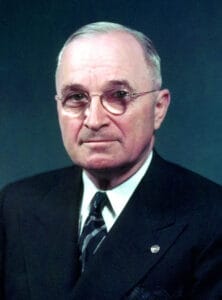
- After serving as vice president of the FDR administration, Truman assumed the presidential position between 1945 and 1953. In March 1947, he made two big moves that had a massive effect on US society. He signed Executive Order 9835, also known as the Loyalty Order, which allowed federal investigation of federal employees’ beliefs and affiliations.
- Measures of loyalty under Executive Order 9835 were:
- Espionage, sabotage, treason, sedition
- Membership in or association with any communist or subversive organisation
- Disclosure of confidential information
- Moreover, he created the Truman Doctrine, a foreign policy to protect the US from Soviet communist influence and geopolitical expansion. As Great Britain faced economic problems after the war, they played a minimal role in the reconstruction process in the Mediterranean, specifically Greece and Turkey. Thus, the US responded with the Truman Doctrine in which the US would give financial aid to countries threatened by Communist expansion. This was also in line with the potential civil war in Greece, which could be used by the Soviets to influence the country.
- The Truman Doctrine also became known as Truman’s containment speech. The United States containment policy aimed to control Soviet Communist expansion through military, diplomatic, and economic measures. It served as a de facto announcement of the Cold War. It reiterated America’s foreign policy against Communism.
- The Truman Doctrine defined the extremities between good and bad, democracy and dictatorship, and freedom and oppression. It drastically overturned the existing 1823 Monroe Doctrine stating that the U.S. should practice the principle of neutrality on foreign relations.
- The USSR was the centre of all Communist activity around the world.
- Communism could strike through external invasion and internal subversion.
- In order to stop Communist aggression, the U.S. needed to provide military and economic assistance to countries in need.
- The House Un-American Activities Committee (HUAC) was an investigative committee formed in 1938 in the US House of Representatives. During the Cold War, HUAC’s investigations and exposure of communists working inside the federal government intensified.
- The US government was successful in instilling fear and hysteria in American people by painting a negative image of communist infiltration through media and entertainment as well as establishing policies, like the Truman Doctrine, that intensified this fear.
The Marshall Plan
- Under the Truman administration, Secretary of State George C. Marshall headed what became known as the Marshall Plan: an initiative also known as the European Recovery Program, which was designed to help Western European countries get back on their feet after WWII while countering the spread of communism in Europe.
- The plan included $13 billion in aid to these countries. George Marshall was given the Nobel Peace Prize in 1953 for his efforts in the plan. Countries that participated in the Marshall Plan were:
- Austria
- Belgium
- Denmark
- France
- Western Germany
- Greece
- Iceland
- Ireland
- Italy
- Luxembourg
- Netherlands
- Norway
- Portugal
- Sweden
- Switzerland
- Turkey
- United Kingdom
The Response of the East
- Cominform and Comecon were created by Joseph Stalin and were established as ways for political expansion by the USSR. Cominform was the centralised organisation of the international communist movement in the period from 1947 to 1956. Comecon, on the other hand, was created as an organisation of economic cooperation among the communist states. The Cominform and the Comecon was Joseph Stalin’s reaction to America’s Truman Doctrine and Marshall Plan.
Cominform
- The Cominform was the centralised organisation of the international communist movement in the period from 1947 to 1956. It was in a way the successor of the Comintern. The name of Cominform comes from the contraction, in Russian, of the Information Bureau of the Communist and Workers’ Parties. The aim of the organisation is to closely control the ideological and political evolution of the participating states or communist parties.
- Since 1945, the USSR had sought to expand its political power. The Cominform was thus created on 5 October 1947, on the occasion of the conference of the European Communist Parties of Szklarska Poreba, in Polish Lower Silesia, from September 22 to 27. The organisation centralises the link between the European communist parties, reinforcing the Soviet influence on the latter. Proof of the organisation’s Eurocentrism, Chinese and Vietnamese PCs were not invited.
- The creation of the Cominform by Stalin appears as a response to the American Marshall Plan, rejected by the popular democracies of Eastern Europe (under Soviet pressure).
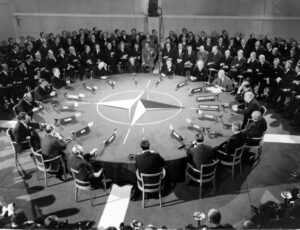
- As security was being strengthened, it led to the formation of military alliances. In April 1949, the North Atlantic Treaty Organisation (NATO) was formed. The United States and Canada signed a treaty with Belgium, Britain, Denmark, France, Iceland, Italy, Luxembourg, the Netherlands, Norway, and Portugal signifying that assistance should be given if any of the said countries were attacked. West Germany and Turkey followed suit.
Comecon
- The aim of this body was the best planning and specialisation of the national industries of the communist countries. After the Second World War, the so-called “socialist” countries adopted bilateral clearing (compensation) within the Council for Mutual Economic Assistance or CMEA, the only method applicable to the foreign exchanges of a country with a planned economy. They then introduced multilateral clearing, which is more conducive to overcoming the obstacles to the development of CMEA countries and where the “transferable ruble” should act as an accounting unit. At the macroeconomic level, the “transferable ruble” was a means of comparing the volume of reciprocal deliveries.
- The creation of the CMEA, which can be seen as a reaction to the Marshall Plan that helped rebuild Western Europe (West Germany, France, etc.) and the formation of the “free world”, led to economic growth of the Eastern European satellite countries towards the Soviet Union, inter alia by the obligation to use the “transferable ruble” in interstate transactions, thus reinforcing the hegemony of the Soviet Union.
- The organisation also played a vital political role for the USSR, since it enabled it to obtain a great deal of weight in domestic affairs in exchange for subsidies, loans, or the sending of labor.

